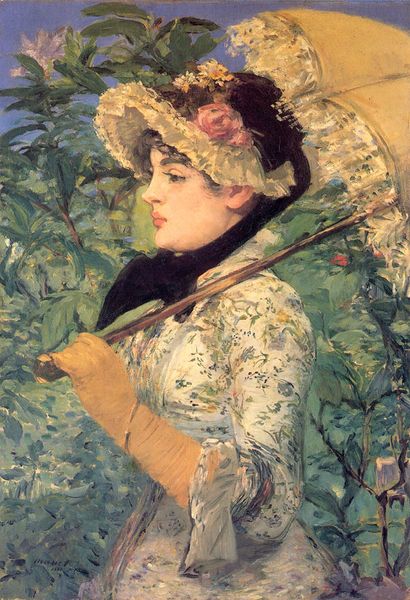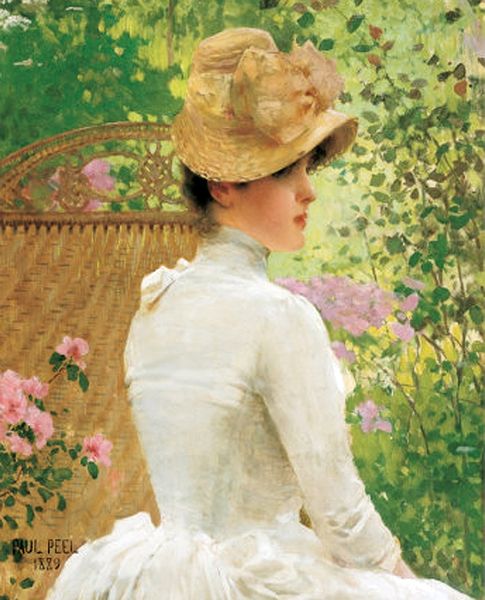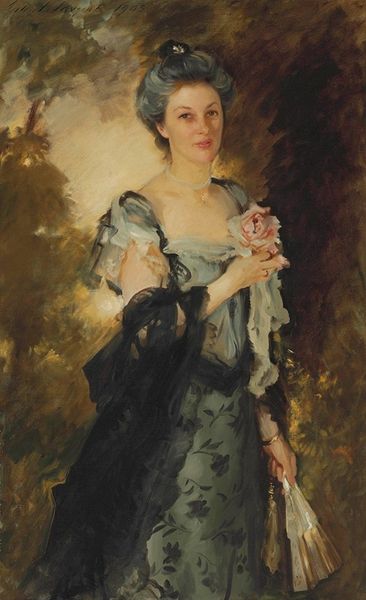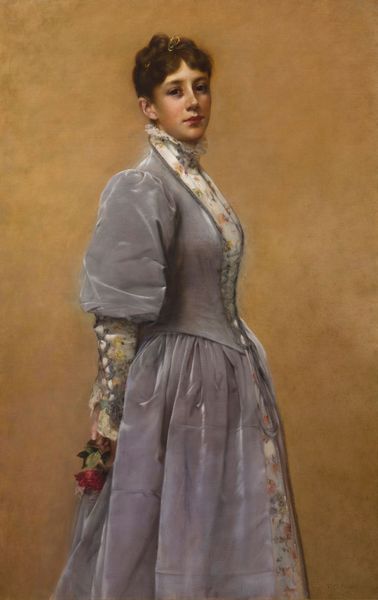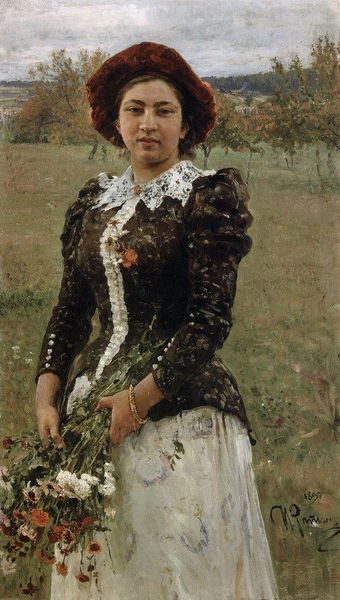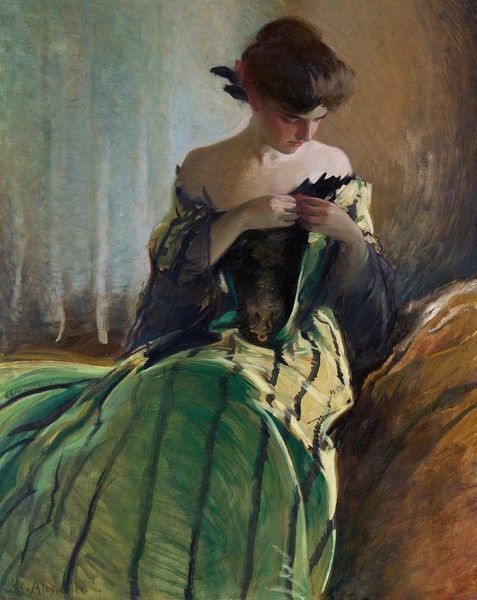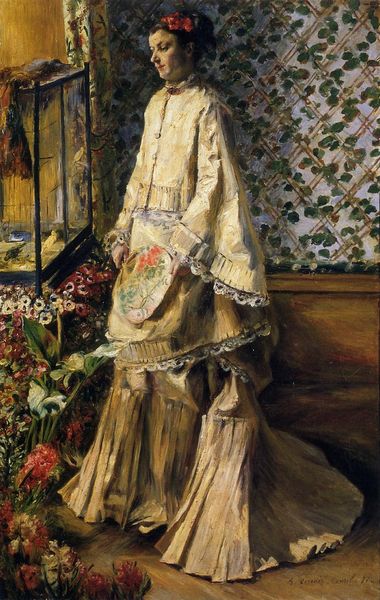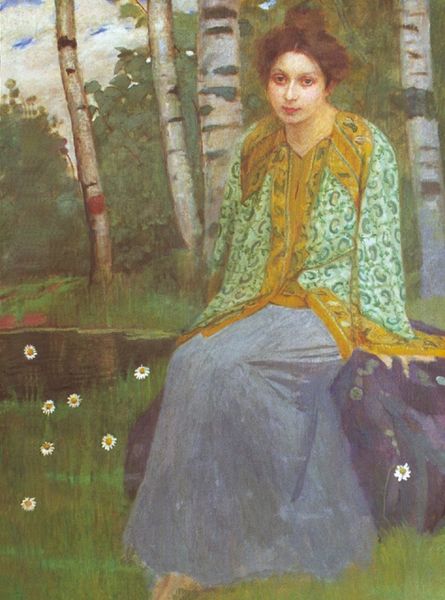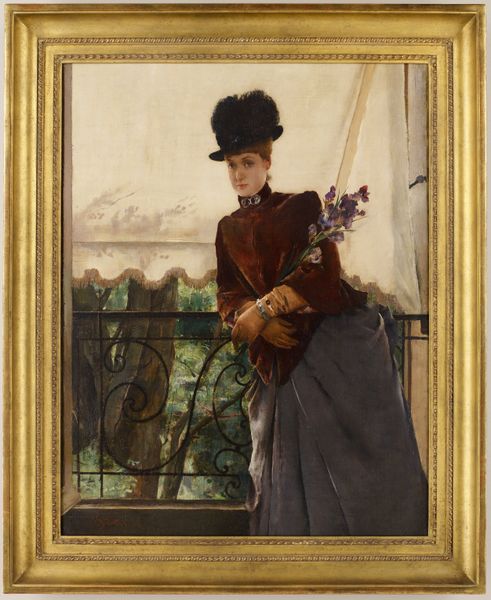
oil-paint
#
portrait
#
impressionism
#
oil-paint
#
landscape
#
oil painting
#
genre-painting
Copyright: Public domain
Editor: Here we have James Tissot’s “In the Greenhouse,” painted in 1869, using oil paint. It strikes me as a study of contrasts. You have this fashionable woman, rendered with such detail, placed within the soft, almost blurred setting of the greenhouse. What's your take on this juxtaposition? Curator: It's a brilliant observation! To me, this contrast speaks volumes about the position of women in 19th-century society. Consider how women, particularly those of a certain class, were often confined to domestic spheres, much like plants in a greenhouse. Notice the woman’s elaborate clothing. What does that suggest to you? Editor: Perhaps it highlights the constraints placed on women to maintain a certain appearance, even in their own private gardens. A kind of gilded cage? Curator: Precisely. And observe her gaze. She looks off to the side, a hint of melancholy in her eyes, perhaps indicating a longing for something beyond the cultivated beauty surrounding her. Do you think the greenhouse setting serves as a kind of boundary, both literally and figuratively? Editor: That's interesting. It definitely reinforces that idea of confinement. It’s as if nature itself is being controlled, mirroring the control exerted over women's lives. Curator: Yes! Tissot, often read as a painter of manners and fashion, is also subtly commenting on the limited roles available to women. The flowers around her become almost like silent witnesses to her restricted existence. What does it tell you about our present that the debate on those roles are still at play in the current world? Editor: That’s really insightful. I hadn’t considered the broader social commentary. I guess I saw it more as just a beautiful portrait. I’ll definitely look at 19th century paintings in a different light now. Curator: Art holds a mirror to society. Exploring those connections is how we bring the past into a meaningful dialogue with the present.
Comments
No comments
Be the first to comment and join the conversation on the ultimate creative platform.

